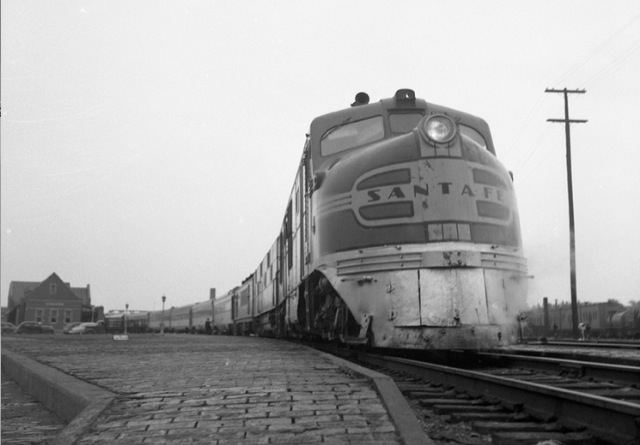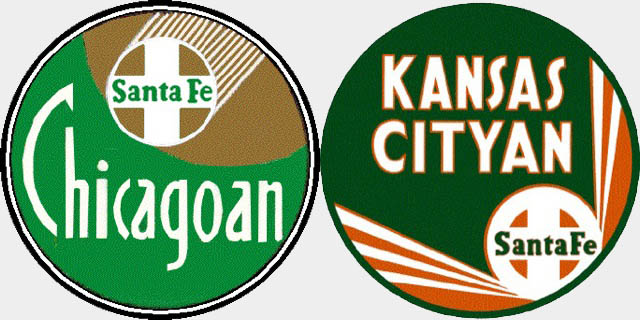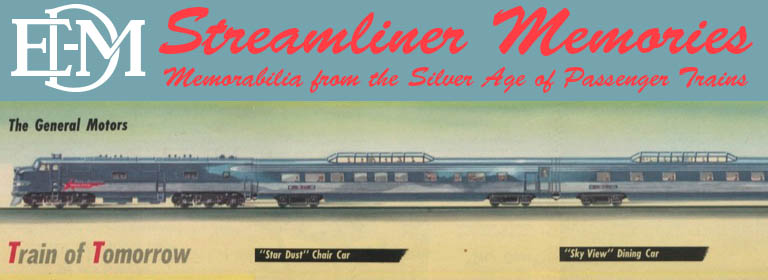Wikipedia says the demonym for Kansas City is Kansas Citian, but Santa Fe named its Chicago-to-Dallas via Kansas City streamlined train the Kansas Cityan. When the train went in the reverse direction, it was called the Chicagoan. Originally, the trains were numbered 11 and 12, but in 1966, when this timetable was printed, the southbound train was numbered 19–meaning it was combined with the Chief–to Kansas City, then changed to number 11 to Dallas. Northbound, it was number 12 all the way.

Click image to download a 0.7-MB PDF of this OCRed timetable. Click here to download a non-OCR version.
Heavyweight trains of the same names operated between Chicago and Kansas City from 1916 to 1929. When Santa Fe acquired its first fleet of streamliners in 1938, it reused the names for the Chicago-Kansas City day trains which consisted of a baggage/RPO, three coaches, a coach-lounge, diner, and parlor observation car.

Initially, the Chicagoan/Kansas Cityan trains were pulled by an elegant E1 locomotives, but soon Santa Fe switched them to one of the original General Motors box cab Diesels modified to look like a squashed E1–one of the ugliest passenger Diesels ever to run on the Santa Fe. This photo taken in Streator, Ill., on May 21, 1950, was posted to Flickr by Bill Raia.
The trip from Chicago to K City took eight hours. Rather than let the trains spend two thirds of their time idle in Kansas City yards, Santa Fe soon added a leg to Oklahoma. The train arrived in Oklahoma City late at night, was turned, and left early in the morning. When Santa Fe acquired enough equipment for a third train set, including sleeping cars, it extended the train to Dallas, arriving there around 8 am and leaving at around 8:30 pm.

In 1954, Santa Fe added full-length domes to the trains. At the time of this timetable, the domes and diners were turned at Wichita, as they weren’t used much at night, thus saving the railway some equipment.
